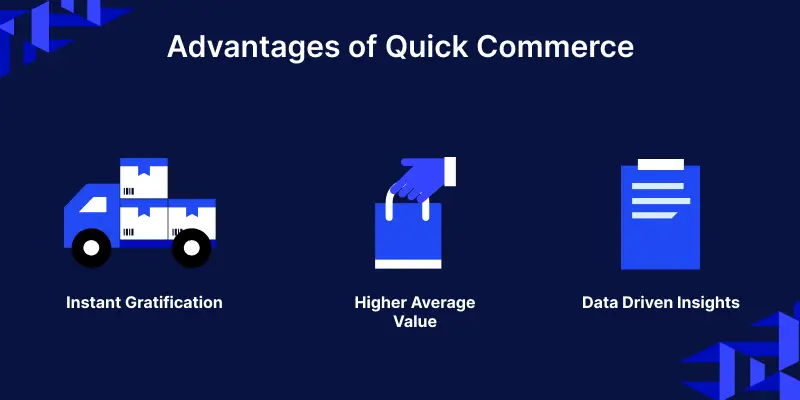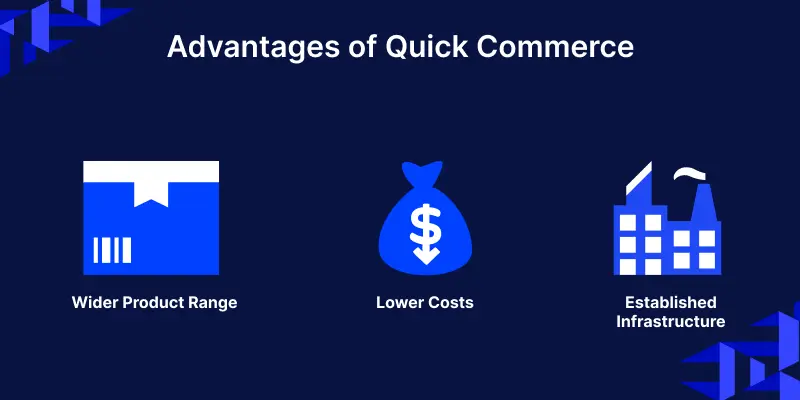In this article, we are going to discuss the key differences and advantages of quick commerce and traditional e-commerce.
As you know, the pandemic has changed our lifestyles dramatically around the globe, and we have been slowly adapting.
Having spent so much time at home, we developed many new habits, including online shopping.
Online shopping means buying things from the internet instead of going to a store. but not many people did it until the 1990s.
However, the eCommerce platform has grown exponentially over the past few years. In just a few years, online shopping became super popular.
In the year 2021, people spent a huge amount of money shopping online. It was like billions and billions of rupees!
So, the pandemic made online shopping even more famous, and now, it’s a big part of our lives
According to Statista, by 2021, eCommerce sales worldwide will increase by 4.9 trillion dollars in revenue and will reach 5.5 trillion dollars in retail eCommerce.
As shown in the chart below.

This picture shows how much online shopping has grown. See how the line goes up and up? That means more and more money is spent on online shopping.
Estimated 95% Of Purchases To Be Made Online By 2040
It is estimated that 95% of all purchases will be made online by 2040, as e-commerce has become an integral part of global retail over the last few years.
By this year, 95% of eCommerce purchases are done on smart devices from 18% in 2018 as shown in the data below:

What is the quick Commerce –
Quick commerce also known as q-commerce, which is a relatively new subset of e-commerce that focuses on the fast delivery of products, typically within minutes or hours.
It’s a direct response to consumers’ growing demand for instant gratification.
Top Quick Commerce Platform –
-
- Instacart
-
- Doordash
-
- Deliveroo
-
- Blinkit
-
- Zepto

What is the Tradition e-Commerce –
Traditional e-commerce refers to the buying and selling of goods and services electronically, primarily over the Internet. It’s essentially online shopping.
Top Traditional e-Commerce Platform –
-
- Amazon
- Flipkart
- Myntra
- eBay
- Aliexpress
- Snapdeal

Key Differences Between Quick Commerce and Traditional E-commerce.
Delivery Speed :
Quick Commerce: You get your product fast, maybe in an hour or two. It is like ordering pizza, but instead of pizza, you’re getting groceries or other things.
This ultra-fast delivery is the main value of quick commerce
Traditional E-commerce: It takes a few days for your order to arrive,this is like ordering clothes online and waiting for a package.
Product Range:
Quick Commerce: You can buy things you need right away, like snacks, drinks, or basic household items.
Traditional E-commerce: You can buy almost anything, from clothes and electronics to furniture and books.
Inventory Management :
Quick Commerce: Stores keep a small amount of stuff nearby so they can deliver it quickly. It’s like having a mini-warehouse close to your home.
Traditional E-commerce: Big warehouses store lots of products, and they send them to you from there.
Delivery Network:
Quick Commerce: They use special delivery people who work in a small area to bring your order fast.
Traditional E-commerce: Typically uses a network of larger warehouses and distribution centres to store and ship products.
Also, many delivery companies like courier services handle the shipping of your order.
Customer Experience:
Quick Commerce: The focus is on delivering products quickly and efficiently to meet the customer’s immediate needs.
So quick shopping is great for when you need something right away.
Traditional E-commerce: Customers have more time to research and compare products before making a purchase so regular online shopping offers a wider range of products.

Advantages of Quick Commerce
Instant Gratification: Customers receive their orders incredibly fast. This makes people happy because they don’t have to wait.
Customers will come back: Customers get their product so fast, so customers want to shop there again and again.
Higher Average Order Value: Due to convenience, customers tend to spend more per order.
Data-Driven Insights: Stores can figure out what people like to buy and when, so they can have the right things ready.

Advantages of Traditional E-commerce
-
- Wider Product Range: Offers a vast selection of products, catering to diverse customer needs and customers can find almost everything.
-
- Lower Costs: Generally has lower operational costs compared to quick commerce because stores don’t have to pay for big warehouses in the nearby location.
-
- Established Infrastructure: Benefits from existing logistics and supply chain networks.so they already know how to get things to people, so it’s easy for them.

When to Choose Which?
-
- Quick Commerce: Ideal for products with high demand and immediate consumption needs, such as groceries, pharmaceuticals, and convenience items.
-
- Traditional E-commerce: Suitable for a wide range of products, especially those with lower purchase frequency and less time-sensitive needs.
How Bagsito can help you to develop quick commerce and traditional e-commerce platforms.
Bagisto, as an open-source e-commerce platform, offers a flexible foundation to build both quick commerce and traditional e-commerce solutions.
We have developed many extensions for your requirements, You can find all the extensions at the Webkul Store.
Webkul can also do integration and customisation services and make an ideal e-commerce platform for you.
Conclusion
Quick commerce meets the demand for instant delivery, while traditional e-commerce offers variety and lower costs.
Both models have unique strengths, and businesses should choose based on their audience’s needs.
If you require further assistance or more information, please reach out to us at [email protected] or raise a ticket at webkul.uvdesk.com



Be the first to comment.